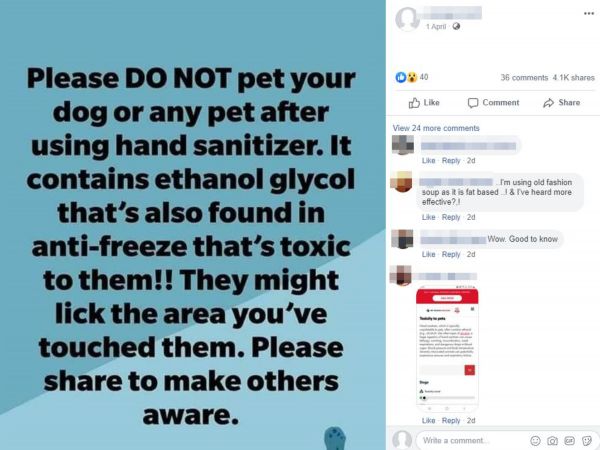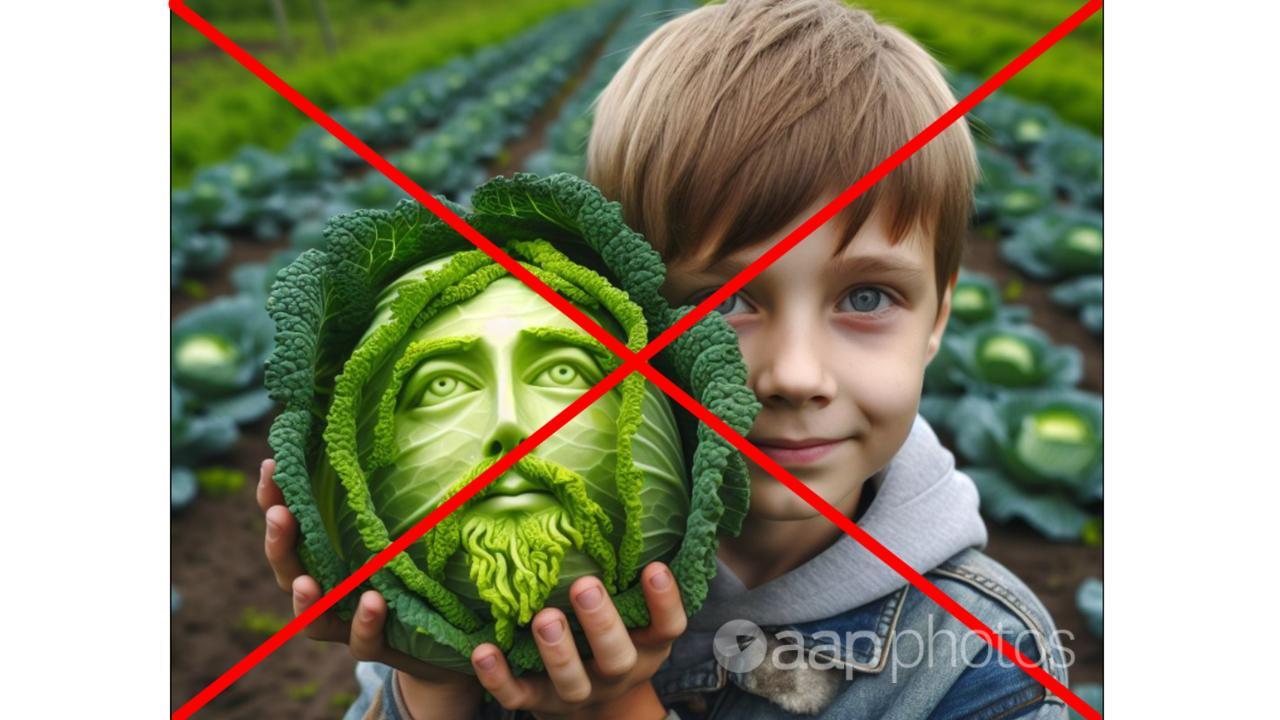The Statement
A widely shared Facebook post is warning pet owners about the ingredients of hand sanitisers and their purported effects on animals.
The April 1 Facebook post states: “Please DO NOT pet your dog or any pet after using hand sanitizer. It contains ethanol glycol that’s also found in anti-freeze that’s toxic to them!!”
The post concludes: “They might lick the area you’ve touched them. Please share to make others aware.”
The post has been viewed over 200,000 times, shared over 3,600 times and attracted more than 30 comments.

The Analysis
The April 1 Facebook post claims that people should not touch dogs or other pets after using hand sanitiser because it “contains ethanol glycol, that’s also found in anti-freeze”.
Ethanol glycol is not a real chemical compound. The post may be referring to ethylene glycol, an industrial compound found in many consumer products including antifreeze. Ethylene glycol is toxic to humans and animals, with sufficient consumption of the substance sometimes proving fatal, according to the US Centers for Disease Control.
Ethylene glycol is not used in hand sanitiser formulations. Hand sanitisers authorised for sale in Australia in the form of hand rubs contain between 60-95% alcohol as ethanol or isopropyl alcohol, with small amount of other chemicals.
Hand sanitisers that claim to combat viruses are regulated as “therapeutic goods” by the Therapeutic Goods Administration and must be included in the Australian Register of Therapeutic Goods (ARTG).
“Ethylene glycol is not included as an ingredient in any hand sanitisers that are registered in the ARTG,” a TGA spokesperson told AAP FactCheck via email.
Other hand sanitisers made for domestic and personal use are classified as ‘cosmetics’ and the chemicals used in them are regulated by the National Industrial Chemicals Notification and Assessment Scheme (NINCAS).
In a statement to AAP FactCheck, a NINCAS spokesperson said: “We are unaware of any use of ethylene glycol in hand sanitisers”.
In the wake of the COVID-19 pandemic and a national shortage of hand sanitiser the TGA introduced legislation that relaxed the requirements for approval of hand sanitiser formulations. The newly formulated products must follow two recipes developed by the World Health Organization (WHO) and US Food and Drug Administration (FDA). Neither recipe calls for the use of ethylene glycol.
University of Sydney Professor of Veterinary Microbiology and Infectious Diseases Jacqueline Norris told AAP FactCheck hand sanitiser can be dangerous for pets if they lick the substance off a person’s hands directly after they have applied the rub.
“Most animals are adverse to licking hands with alcohol on it — fortunately the alcohol evaporates very quickly, but if they did (lick hand rub containing alcohol) it could cause central depression and vomiting mainly due to the high levels of alcohol,” Professor Norris said.

The Verdict
Based on the evidence, AAP FactCheck found the claims in the post to be misleading. Hand sanitisers do not contain ethylene glycol and only pose risks to animals if they lick hand sanitisers with high alcohol quantities off someone’s hand directly after use.
False – The primary claim of the content is factually inaccurate.
* AAP FactCheck is accredited by the Poynter Institute’s International Fact-Checking Network, which promotes best practice through a stringent and transparent Code of Principles. https://aap.com.au/
All information, text and images included on the AAP Websites is for personal use only and may not be re-written, copied, re-sold or re-distributed, framed, linked, shared onto social media or otherwise used whether for compensation of any kind or not, unless you have the prior written permission of AAP. For more information, please refer to our standard terms and conditions.

















